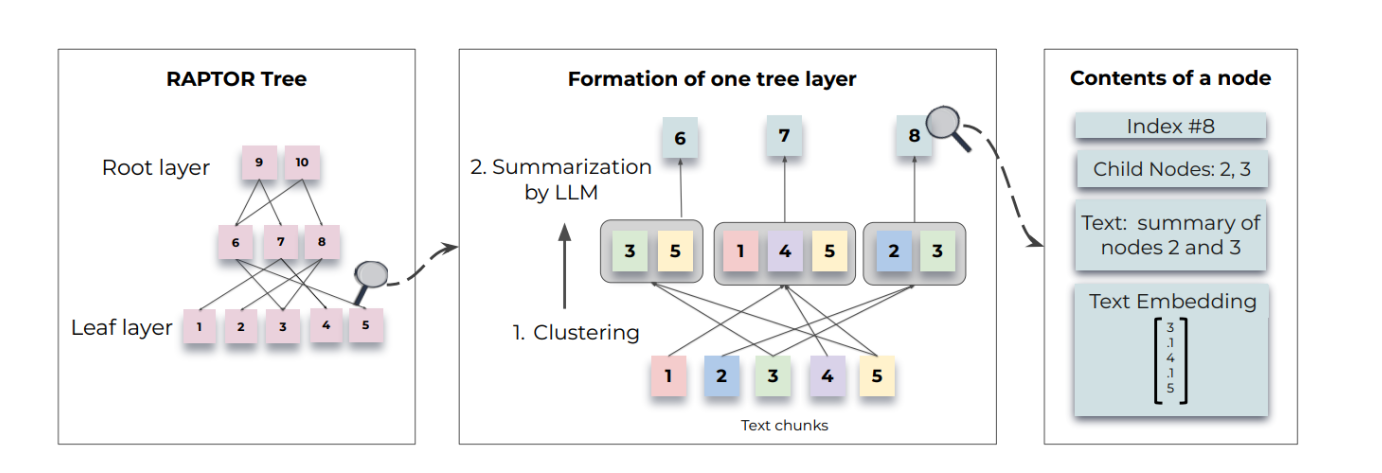为paddle新增LogNormal概率分布
在paddle已有的概率分布的基础上,开发LogNormal概率分
1 任务介绍
在 paddle 中,paddle.distribution 目录下包含了随机变量的概率分布、随机变量的变换、KL 散度相关 API。本次任务的目的是在现有的概率分布方案的基础上,实现 Log Normal 概率分布。
任务要求我们熟悉python,了解概率分布的基本知识。
任务的难度一般,即使我们不了解深度学习的相关知识,通过学习和模仿已有的概率分布方案,也能够完成本任务。
2 设计文档
2.1 初步设计
任务计划新增 LogNormal API,用于 Log Normal 分布的概率统计与随机采样,包括如下方法:
-
mean计算均值 -
variance计算方差 -
sample随机采样 -
rsample重参数化采 -
prob概率密度 -
log_prob对数概率密度 -
entropy熵计算 -
kl_divergence相对熵计算
这些方法可以在paddle.distribution 的已有概率分布中看到,新的概率分布的代码风格及设计思路与已有概率分布保持一致。
为了更好地完成开发任务,我们需要先阅读贡献指南,了解代码贡献的流程,API的设计规范和文档的书写规范。
2.2 框架学习
paddle 的概率分布方案较多,为了明确初步的学习范围,我们需要先了解什么是Log Normal 分布。
Normal 分布是大家熟知的概率分布,它的定义如下,
若随机变量 X X X 服从均值为 μ \mu μ ,方差为 σ 2 \sigma^2 σ2 的 Normal 分布,则 X X X 的概率密度函数为
f ( x ) = 1 2 π σ e − ( x − μ ) 2 2 σ 2 f(x)=\frac{1}{\sqrt{2\pi}\sigma}e^{-\frac{(x-\mu)^2}{2\sigma^{2}}} f(x)=2πσ1e−2σ2(x−μ)2
记作 X ∼ N ( μ , σ 2 ) X \sim N(\mu, \sigma^2) X∼N(μ,σ2) 。
Log Normal分布的基础就是 Normal 分布:
如果随机变量 X X X 满足 l n X ∼ N ( μ , σ 2 ) lnX\sim N(\mu, \sigma^2) lnX∼N(μ,σ2) ,则称 X X X 服从 Log Normal 分布, X X X 的概率密度函数为
f ( x ) = 1 σ x 2 π e ( − ( l n ( x ) − μ ) 2 2 σ 2 ) f(x) = \frac{1}{\sigma x \sqrt{2\pi}} e^{(-\frac{(ln(x)-\mu)^2}{2\sigma^2})} f(x)=σx2π1e(−2σ2(ln(x)−μ)2)
记作 l n X ∼ N ( μ , σ 2 ) lnX \sim N(\mu, \sigma^2) lnX∼N(μ,σ2)。
可见 Normal 分布 是 Log Normal 分布的基础,我们可先学习 Normal 概率分布的实现。
paddle.distribution中已经实现了 Normal 概率分布,可以通过源代码中的例子学习 Normal API 的使用。
import paddle
from paddle.distribution import Normal
# Define a single scalar Normal distribution.
dist = Normal(loc=0., scale=3.)
# Define a batch of two scalar valued Normals.
# The first has mean 1 and standard deviation 11, the second 2 and 22.
dist = Normal(loc=[1., 2.], scale=[11., 22.])
# Get 3 samples, returning a 3 x 2 tensor.
dist.sample([3])
# Define a batch of two scalar valued Normals.
# Both have mean 1, but different standard deviations.
dist = Normal(loc=1., scale=[11., 22.])
# Complete example
value_tensor = paddle.to_tensor([0.8], dtype="float32")
normal_a = Normal([0.], [1.])
normal_b = Normal([0.5], [2.])
sample = normal_a.sample([2])
# a random tensor created by normal distribution with shape: [2, 1]
entropy = normal_a.entropy()
# [1.4189385] with shape: [1]
lp = normal_a.log_prob(value_tensor)
# [-1.2389386] with shape: [1]
p = normal_a.probs(value_tensor)
# [0.28969154] with shape: [1]
kl = normal_a.kl_divergence(normal_b)
# [0.34939718] with shape: [1]
需要注意Normal paddle 的旧版本1.8的 API,paddle 现在已经发布2.0版本,我们开发 LogNormal 要使用 paddle 2.0 的 API。阅读 升级指南 了解 paddle 新旧版本的差异信息,大致浏览一遍新旧 API 的映射表。
paddle.distribution 中的 Multinomial 类是基于 paddle 2.0 ,可以作为参考。
Distribution 类是 paddle 概率分布的基类, Normal 类继承了 Distribution 类。Normal 类中实现了 prob,log_prob,entropy,kl_divergence等方法。
2.3 竞品分析
在设计 paddle 新的 API 之前,应该分析和学习其它深度学习框架同类 API 的设计方案,对比不同方案的优势与不足,从而总结出自己的方案。
深度学习框架 pytorch 和 tenserflow 中有概率分布 API,我们可以阅读它们的 LogNormal API 文档。
两个框架的 LogNormal 类的初始化参数类似,都需要传入 loc 和 scale 两个参数。
#tensorflow
tfp.distributions.LogNormal(
loc,
scale,
validate_args=False,
allow_nan_stats=True,
name='LogNormal'
)
#pytorch
torch.distributions.log_normal.LogNormal(
loc,
scale,
validate_args=None
)
两者的LogNormal 类的基类都是TransformedDistribution,从文档中可了解到,如果概率分布 P ( y ) P(y) P(y) 可以表示成一个基础概率分布 P ( x ) P(x) P(x) ,以及一个可微可逆的变换 Y = g ( X ) Y=g(X) Y=g(X) ,那么可以用通过继承 TransformedDistribution类,将概率分布 P ( x ) P(x) P(x) 变换为新的概率分布 P ( y ) P(y) P(y)。
LogNormal 是满足使用TransformedDistribution 类的条件。
X ∼ N o r m a l ( μ , σ ) X \sim Normal(\mu, \sigma) X∼Normal(μ,σ)
Y = e x p ( X ) ∼ L o g N o r m a l ( μ , σ ) Y = exp(X) \sim LogNormal(\mu, \sigma) Y=exp(X)∼LogNormal(μ,σ)
再看 pytorch 的 LogNormal 的初始化方法,代码中将 Normal 作为基础分布,并用 ExpTransform 方法指示了变换过程。
def __init__(self, loc, scale, validate_args=None):
base_dist = Normal(
loc,
scale,
validate_args=validate_args
)
super(LogNormal, self).__init__(
base_dist,
ExpTransform(),
validate_args=validate_args
)
弄清楚了 pytorch 和 tensorflow 的 LogNormal 的实现方案,我们回到 paddle,明确目前 paddle 的 API 支持状况。
在paddle.distribution 中已经实现了TransformedDistribution 类,并且已经定义了 ExpTransform 变换。
从TransformedDistribution 的代码中可以看到,我们继承了该类,大部分方法就不需要自己实现了,类中已经定义了基础分布和新的分布对应方法之间的变换。
paddle 中暂时还没有TransformedDistribution 的子类可供参考,但我们可以阅读 TransformedDistribution 类的测试代码,学习如何使用该类。
@param.place(config.DEVICES)
@param.param_cls(
(param.TEST_CASE_NAME, 'base', 'transforms'),
[
(
'base_normal',
paddle.distribution.Normal(0.0, 1.0),
[paddle.distribution.ExpTransform()],
)
],
)
class TestIndependent(unittest.TestCase):
def setUp(self):
self._t = paddle.distribution.TransformedDistribution(
self.base, self.transforms
)
...
paddle 的 TransformedDistribution 的使用方法与 pytroch 类似,并且也测试参数恰好是实现 Log Normal 分布所需的参数,我们就大体明确了 LogNormal 的实现方法 。
2.4 实现方案
参考 paddle 的 Normal 的实现,我们可以初步设计出 API 的名称和参数。
paddle.distribution.LogNormal(loc, scale)
参数 loc, scale 分别为基础分布 Normal 的均值和标准差。
例如,随机变量 X X X 服从 Log Normal 分布,即 l n X ∼ N ( μ , σ 2 ) lnX \sim N(\mu, \sigma^2) lnX∼N(μ,σ2) ,对应的参数 l o c = μ loc=\mu loc=μ , s c a l e = σ scale=\sigma scale=σ 。
我们通过继承TransformedDistribution 类实现 LogNormal 类,将 Normal 分布变换为 Log Normal 分布。
class LogNormal(TransformedDistribution):
def __init__(self, loc, scale):
base_dist = Normal(loc, scale)
super(LogNormal, self).__init__(
base_dist,
[paddle.distribution.ExpTransform()]
)
...
接下来我们逐个设计LogNormal 类的方法。
LogNormal 类的初始化参数有 l o c loc loc 和 s c a l e scale scale ,记参数 l o c = μ loc=\mu loc=μ , s c a l e = σ scale=\sigma scale=σ 。
mean计算均值
均值的计算方法: e μ + σ 2 2 e^ {\mu + \frac{\sigma^2}{2}} eμ+2σ2
variance计算方差
方差的计算方法: e 2 μ + σ 2 ( e σ 2 − 1 ) e^{2\mu + \sigma^2}(e^{\sigma^2} - 1) e2μ+σ2(eσ2−1)
entropy熵计算
熵的计算方法:基础分布 Normal 的熵与 μ \mu μ 求和。
kl_divergence相对熵计算
与对应的基础分布Normal的计算逻辑相同,复用即可。
sample随机采样
继承父类 TransformedDistribution 的 sample 方法,将基础分布 Normal 的 sample 结果进行变换,得到 Log Normal 分布的 sample 结果。
-
rsample重参数化采样
继承父类 -
prob概率密度
继承父类 -
log_prob对数概率密度
继承父类
2.5 单测方案
在框架开发中,对新增 API 的详细测试是必不可少的。
我们通过参考Multinomial 类的测试代码,以及 tensorflow 的 LogNormal 类的测试代码,设计出 paddle 的LogNormal 类的测试方案。
参考已有概率分布方案的测试代码,LogNormal 类测试以 Numpy 作为基准,验证API的正确性。测试的主要内容如下,
-
使用 Numpy 实现所有 Log Normal 的API,集成为
LogNormalNumpy类,用以验证本次任务开发的 API 的正确性。 -
使用同样的参数实例化
LogNormal类和LogNormalNumpy类,并调用mean、variance、entropy、prob、log_prob、kl_divergence方法,测试结果是否一致。 -
使用
LogNormal类的sample方法生成样本,测试这些这样的均值和标准差是否正确,并且进行KS检验。
单测使用parameterize包进行参数化测试,大致结构如下。
from parameterize import TEST_CASE_NAME, parameterize_cls, place, xrand
@place(config.DEVICES)
@parameterize_cls(
(TEST_CASE_NAME, 'loc', 'scale', 'value'),
[
... #测试的参数
],
)
class LogNormalTest(unittest.TestCase):
def setUp(self):
...
def test_mean(self):
...
def test_variance(self):
...
def test_entropy(self):
...
def test_probs(self):
...
def test_log_prob(self):
...
3 代码开发
3.1 API开发
我个人的开发环境是 Ubuntu20 + VS Code,使用的是 docker 环境的 padlde,配合 VS Code 的 docker 插件。
依照设计文档,我们就可以开始代码开发了。
LogNormal 类开发较为简单,实现一些前文提到的公式,就能完成mean,variance,entropy,probs方法的开发。log_prob,sample, rsample方法通过继承父类实现。kl_divergence方法复用 Normal 分布的即可。
import paddle
from paddle.distribution.normal import Normal
from paddle.distribution.transform import ExpTransform
from paddle.distribution.transformed_distribution import TransformedDistribution
class LogNormal(TransformedDistribution):
def __init__(self, loc, scale):
self._base = Normal(loc=loc, scale=scale)
self.loc = self._base.loc
self.scale = self._base.scale
super().__init__(self._base, [ExpTransform()])
@property
def mean(self):
"""Mean of lognormal distribuion.
"""
return paddle.exp(self._base.mean + self._base.variance / 2)
@property
def variance(self):
"""Variance of lognormal distribution.
"""
return paddle.expm1(self._base.variance) * paddle.exp(
2 * self._base.mean + self._base.variance
)
def entropy(self):
r"""Shannon entropy in nats.
"""
return self._base.entropy() + self._base.mean
def probs(self, value):
"""Probability density/mass function.
"""
return paddle.exp(self.log_prob(value))
def kl_divergence(self, other):
r"""The KL-divergence between two lognormal distributions.
"""
return self._base.kl_divergence(other._base)
代码开发完成了,我们还要按照贡献指南的注释规范,补充和修改注释,书写中文和英文文档。
3.2 单测开发
我们以 Numpy 作为基准,验证API的正确性,使用 Numpy 实现 LogNormal 类的方法。
import numpy as np
from test_distribution import DistributionNumpy
class LogNormalNumpy(DistributionNumpy):
def __init__(self, loc, scale):
self.loc = np.array(loc)
self.scale = np.array(scale)
if str(self.loc.dtype) not in ['float32', 'float64']:
self.loc = self.loc.astype('float32')
self.scale = self.scale.astype('float32')
@property
def mean(self):
var = self.scale * self.scale
return np.exp(self.loc + var / 2)
@property
def variance(self):
var = self.scale * self.scale
return (np.exp(var) - 1) * np.exp(2 * self.loc + var)
def log_prob(self, value):
var = self.scale * self.scale
log_scale = np.log(self.scale)
return (
-((np.log(value) - self.loc) * (np.log(value) - self.loc))
/ (2.0 * var)
- log_scale
- math.log(math.sqrt(2.0 * math.pi))
- np.log(value)
)
def probs(self, value):
var = self.scale * self.scale
return np.exp(
-1.0
* ((np.log(value) - self.loc) * (np.log(value) - self.loc))
/ (2.0 * var)
) / (math.sqrt(2 * math.pi) * self.scale * value)
def entropy(self):
return (
0.5
+ self.loc
+ 0.5 * np.log(np.array(2.0 * math.pi).astype(self.loc.dtype))
+ np.log(self.scale)
)
def kl_divergence(self, other):
var_ratio = self.scale / other.scale
var_ratio = var_ratio * var_ratio
t1 = (self.loc - other.loc) / other.scale
t1 = t1 * t1
return 0.5 * (var_ratio + t1 - 1 - np.log(var_ratio))
LogNormal 类的单测要分别在动态图模式和静态图模型下进行。
首先进行动态图测试,测试mean、variance、entropy、prob、log_prob、kl_divergence方法。依照其它概率分布的单测代码,使用 assertEqual 和 np.testing.assert_allclose 进行数据比对。
import math
import unittest
import config
import numpy as np
import scipy.stats
from parameterize import TEST_CASE_NAME, parameterize_cls, place, xrand
from test_distribution import DistributionNumpy
import paddle
from paddle.distribution.kl import kl_divergence
from paddle.distribution.lognormal import LogNormal
from paddle.distribution.normal import Normal
@place(config.DEVICES)
@parameterize_cls(
(TEST_CASE_NAME, 'loc', 'scale', 'value'),
[
('one-dim', xrand((2,)), xrand((2,)), xrand((2,))),
('multi-dim', xrand((3, 3)), xrand((3, 3)), xrand((3, 3))),
],
)
class LogNormalTest(unittest.TestCase):
def setUp(self):
paddle.disable_static()
self.paddle_lognormal = LogNormal(
loc=paddle.to_tensor(self.loc), scale=paddle.to_tensor(self.scale)
)
self.np_lognormal = LogNormalNumpy(self.loc, self.scale)
def test_mean(self):
mean = self.paddle_lognormal.mean
np_mean = self.np_lognormal.mean
self.assertEqual(mean.numpy().dtype, np_mean.dtype)
np.testing.assert_allclose(
mean,
np_mean,
rtol=config.RTOL.get(str(self.scale.dtype)),
atol=config.ATOL.get(str(self.scale.dtype)),
)
def test_variance(self):
var = self.paddle_lognormal.variance
np_var = self.np_lognormal.variance
self.assertEqual(var.numpy().dtype, np_var.dtype)
np.testing.assert_allclose(
var,
np_var,
rtol=config.RTOL.get(str(self.scale.dtype)),
atol=config.ATOL.get(str(self.scale.dtype)),
)
def test_entropy(self):
entropy = self.paddle_lognormal.entropy()
np_entropy = self.np_lognormal.entropy()
self.assertEqual(entropy.numpy().dtype, np_entropy.dtype)
np.testing.assert_allclose(
entropy,
np_entropy,
rtol=config.RTOL.get(str(self.scale.dtype)),
atol=config.ATOL.get(str(self.scale.dtype)),
)
def test_probs(self):
with paddle.fluid.dygraph.guard(self.place):
probs = self.paddle_lognormal.probs(paddle.to_tensor(self.value))
np_probs = self.np_lognormal.probs(self.value)
np.testing.assert_allclose(
probs,
np_probs,
rtol=config.RTOL.get(str(self.scale.dtype)),
atol=config.ATOL.get(str(self.scale.dtype)),
)
def test_log_prob(self):
with paddle.fluid.dygraph.guard(self.place):
log_prob = self.paddle_lognormal.log_prob(
paddle.to_tensor(self.value)
)
np_log_prob = self.np_lognormal.log_prob(self.value)
np.testing.assert_allclose(
log_prob,
np_log_prob,
rtol=config.RTOL.get(str(self.scale.dtype)),
atol=config.ATOL.get(str(self.scale.dtype)),
)
测试sample 和 rsample 方法。我们首先测试生成的样本的均值和方差是否符合预期,然后对样本进行KS检验。KS检验是较为关键的一步,我们使用 scipy.stats 模块进行检验。
@place(config.DEVICES)
@parameterize_cls(
(TEST_CASE_NAME, 'loc', 'scale'),
[('sample', xrand((4,)), xrand((4,), min=0, max=1))],
)
class TestLogNormalSample(unittest.TestCase):
def setUp(self):
paddle.disable_static()
self.paddle_lognormal = LogNormal(loc=self.loc, scale=self.scale)
n = 100000
self.sample_shape = (n,)
self.rsample_shape = (n,)
self.samples = self.paddle_lognormal.sample(self.sample_shape)
self.rsamples = self.paddle_lognormal.rsample(self.rsample_shape)
def test_sample(self):
samples_mean = self.samples.mean(axis=0)
samples_var = self.samples.var(axis=0)
np.testing.assert_allclose(
samples_mean, self.paddle_lognormal.mean, rtol=0.1, atol=0
)
np.testing.assert_allclose(
samples_var, self.paddle_lognormal.variance, rtol=0.1, atol=0
)
rsamples_mean = self.rsamples.mean(axis=0)
rsamples_var = self.rsamples.var(axis=0)
np.testing.assert_allclose(
rsamples_mean, self.paddle_lognormal.mean, rtol=0.1, atol=0
)
np.testing.assert_allclose(
rsamples_var, self.paddle_lognormal.variance, rtol=0.1, atol=0
)
batch_shape = (self.loc + self.scale).shape
self.assertEqual(
self.samples.shape, list(self.sample_shape + batch_shape)
)
self.assertEqual(
self.rsamples.shape, list(self.rsample_shape + batch_shape)
)
for i in range(len(self.scale)):
self.assertTrue(
self._kstest(self.loc[i], self.scale[i], self.samples[:, i])
)
self.assertTrue(
self._kstest(self.loc[i], self.scale[i], self.rsamples[:, i])
)
def _kstest(self, loc, scale, samples):
# Uses the Kolmogorov-Smirnov test for goodness of fit.
ks, _ = scipy.stats.kstest(
samples, scipy.stats.lognorm(s=scale, scale=np.exp(loc)).cdf
)
return ks < 0.02
测试 kl_divergence 方法,由于 Normal 和 LogNormal 的kl_divergence 定义相同,我们可以参考Normal 的测试代码。
@place(config.DEVICES)
@parameterize_cls(
(TEST_CASE_NAME, 'loc1', 'scale1', 'loc2', 'scale2'),
[
('one-dim', xrand((2,)), xrand((2,)), xrand((2,)), xrand((2,))),
(
'multi-dim',
xrand((2, 2)),
xrand((2, 2)),
xrand((2, 2)),
xrand((2, 2)),
),
],
)
class TestLogNormalKL(unittest.TestCase):
def setUp(self):
paddle.disable_static()
self.ln_a = LogNormal(
loc=paddle.to_tensor(self.loc1), scale=paddle.to_tensor(self.scale1)
)
self.ln_b = LogNormal(
loc=paddle.to_tensor(self.loc2), scale=paddle.to_tensor(self.scale2)
)
self.normal_a = Normal(
loc=paddle.to_tensor(self.loc1), scale=paddle.to_tensor(self.scale1)
)
self.normal_b = Normal(
loc=paddle.to_tensor(self.loc2), scale=paddle.to_tensor(self.scale2)
)
def test_kl_divergence(self):
kl0 = self.ln_a.kl_divergence(self.ln_b)
kl1 = kl_divergence(self.ln_a, self.ln_b)
kl_normal = kl_divergence(self.normal_a, self.normal_b)
kl_formula = self._kl(self.ln_a, self.ln_b)
self.assertEqual(tuple(kl0.shape), self.scale1.shape)
self.assertEqual(tuple(kl1.shape), self.scale1.shape)
np.testing.assert_allclose(
kl0,
kl_formula,
rtol=config.RTOL.get(str(self.scale1.dtype)),
atol=config.ATOL.get(str(self.scale1.dtype)),
)
np.testing.assert_allclose(
kl1,
kl_formula,
rtol=config.RTOL.get(str(self.scale1.dtype)),
atol=config.ATOL.get(str(self.scale1.dtype)),
)
np.testing.assert_allclose(
kl_normal,
kl_formula,
rtol=config.RTOL.get(str(self.scale1.dtype)),
atol=config.ATOL.get(str(self.scale1.dtype)),
)
def _kl(self, dist1, dist2):
loc1 = np.array(dist1.loc)
loc2 = np.array(dist2.loc)
scale1 = np.array(dist1.scale)
scale2 = np.array(dist2.scale)
var_ratio = scale1 / scale2
var_ratio = var_ratio * var_ratio
t1 = (loc1 - loc2) / scale2
t1 = t1 * t1
return 0.5 * (var_ratio + t1 - 1 - np.log(var_ratio))
到此动态图模式的单测就完成了,静态图也是类似的。
import unittest
import config
import numpy as np
import scipy.stats
from parameterize import TEST_CASE_NAME, parameterize_cls, place, xrand
from test_distribution_lognormal import LogNormalNumpy
import paddle
from paddle.distribution.kl import kl_divergence
from paddle.distribution.lognormal import LogNormal
from paddle.distribution.normal import Normal
@place(config.DEVICES)
@parameterize_cls(
(TEST_CASE_NAME, 'loc', 'scale', 'value'),
[
('one-dim', xrand((2,)), xrand((2,)), xrand((2,))),
('multi-dim', xrand((3, 3)), xrand((3, 3)), xrand((3, 3))),
],
)
class TestLogNormal(unittest.TestCase):
def setUp(self):
paddle.enable_static()
startup_program = paddle.static.Program()
main_program = paddle.static.Program()
executor = paddle.static.Executor(self.place)
with paddle.static.program_guard(main_program, startup_program):
loc = paddle.static.data('loc', self.loc.shape, self.loc.dtype)
scale = paddle.static.data(
'scale', self.scale.shape, self.scale.dtype
)
value = paddle.static.data(
'value', self.value.shape, self.value.dtype
)
self.paddle_lognormal = LogNormal(loc=loc, scale=scale)
self.np_lognormal = LogNormalNumpy(loc=self.loc, scale=self.scale)
mean = self.paddle_lognormal.mean
var = self.paddle_lognormal.variance
entropy = self.paddle_lognormal.entropy()
probs = self.paddle_lognormal.probs(value)
log_prob = self.paddle_lognormal.log_prob(value)
fetch_list = [mean, var, entropy, probs, log_prob]
self.feeds = {'loc': self.loc, 'scale': self.scale, 'value': self.value}
executor.run(startup_program)
[
self.mean,
self.var,
self.entropy,
self.probs,
self.log_prob,
] = executor.run(main_program, feed=self.feeds, fetch_list=fetch_list)
def test_mean(self):
np_mean = self.np_lognormal.mean
self.assertEqual(str(self.mean.dtype).split('.')[-1], self.scale.dtype)
np.testing.assert_allclose(
self.mean,
np_mean,
rtol=config.RTOL.get(str(self.scale.dtype)),
atol=config.ATOL.get(str(self.scale.dtype)),
)
def test_var(self):
np_var = self.np_lognormal.variance
self.assertEqual(str(self.var.dtype).split('.')[-1], self.scale.dtype)
np.testing.assert_allclose(
self.var,
np_var,
rtol=config.RTOL.get(str(self.scale.dtype)),
atol=config.ATOL.get(str(self.scale.dtype)),
)
def test_entropy(self):
np_entropy = self.np_lognormal.entropy()
self.assertEqual(
str(self.entropy.dtype).split('.')[-1], self.scale.dtype
)
np.testing.assert_allclose(
self.entropy,
np_entropy,
rtol=config.RTOL.get(str(self.scale.dtype)),
atol=config.ATOL.get(str(self.scale.dtype)),
)
def test_probs(self):
np_probs = self.np_lognormal.probs(self.value)
np.testing.assert_allclose(
self.probs,
np_probs,
rtol=config.RTOL.get(str(self.scale.dtype)),
atol=config.ATOL.get(str(self.scale.dtype)),
)
def test_log_prob(self):
np_log_prob = self.np_lognormal.log_prob(self.value)
np.testing.assert_allclose(
self.log_prob,
np_log_prob,
rtol=config.RTOL.get(str(self.scale.dtype)),
atol=config.ATOL.get(str(self.scale.dtype)),
)
@place(config.DEVICES)
@parameterize_cls(
(TEST_CASE_NAME, 'loc', 'scale'),
[('sample', xrand((4,)), xrand((4,), min=0, max=1))],
)
class TestLogNormalSample(unittest.TestCase):
def setUp(self):
paddle.enable_static()
startup_program = paddle.static.Program()
main_program = paddle.static.Program()
executor = paddle.static.Executor(self.place)
with paddle.static.program_guard(main_program, startup_program):
loc = paddle.static.data('loc', self.loc.shape, self.loc.dtype)
scale = paddle.static.data(
'scale', self.scale.shape, self.scale.dtype
)
n = 100000
self.sample_shape = (n,)
self.rsample_shape = (n,)
self.paddle_lognormal = LogNormal(loc=loc, scale=scale)
mean = self.paddle_lognormal.mean
variance = self.paddle_lognormal.variance
samples = self.paddle_lognormal.sample(self.sample_shape)
rsamples = self.paddle_lognormal.rsample(self.rsample_shape)
fetch_list = [mean, variance, samples, rsamples]
self.feeds = {'loc': self.loc, 'scale': self.scale}
executor.run(startup_program)
[self.mean, self.variance, self.samples, self.rsamples] = executor.run(
main_program, feed=self.feeds, fetch_list=fetch_list
)
def test_sample(self):
samples_mean = self.samples.mean(axis=0)
samples_var = self.samples.var(axis=0)
np.testing.assert_allclose(samples_mean, self.mean, rtol=0.1, atol=0)
np.testing.assert_allclose(samples_var, self.variance, rtol=0.1, atol=0)
rsamples_mean = self.rsamples.mean(axis=0)
rsamples_var = self.rsamples.var(axis=0)
np.testing.assert_allclose(rsamples_mean, self.mean, rtol=0.1, atol=0)
np.testing.assert_allclose(
rsamples_var, self.variance, rtol=0.1, atol=0
)
batch_shape = (self.loc + self.scale).shape
self.assertEqual(self.samples.shape, self.sample_shape + batch_shape)
self.assertEqual(self.rsamples.shape, self.rsample_shape + batch_shape)
for i in range(len(self.scale)):
self.assertTrue(
self._kstest(self.loc[i], self.scale[i], self.samples[:, i])
)
self.assertTrue(
self._kstest(self.loc[i], self.scale[i], self.rsamples[:, i])
)
def _kstest(self, loc, scale, samples):
# Uses the Kolmogorov-Smirnov test for goodness of fit.
ks, _ = scipy.stats.kstest(
samples, scipy.stats.lognorm(s=scale, scale=np.exp(loc)).cdf
)
return ks < 0.02
@place(config.DEVICES)
@parameterize_cls(
(TEST_CASE_NAME, 'loc1', 'scale1', 'loc2', 'scale2'),
[
('one-dim', xrand((2,)), xrand((2,)), xrand((2,)), xrand((2,))),
(
'multi-dim',
xrand((2, 2)),
xrand((2, 2)),
xrand((2, 2)),
xrand((2, 2)),
),
],
)
class TestLogNormalKL(unittest.TestCase):
def setUp(self):
paddle.enable_static()
startup_program = paddle.static.Program()
main_program = paddle.static.Program()
executor = paddle.static.Executor(self.place)
with paddle.static.program_guard(main_program, startup_program):
loc1 = paddle.static.data('loc1', self.loc1.shape, self.loc1.dtype)
scale1 = paddle.static.data(
'scale1', self.scale1.shape, self.scale1.dtype
)
loc2 = paddle.static.data('loc2', self.loc2.shape, self.loc2.dtype)
scale2 = paddle.static.data(
'scale2', self.scale2.shape, self.scale2.dtype
)
self.ln_a = LogNormal(loc=loc1, scale=scale1)
self.ln_b = LogNormal(loc=loc2, scale=scale2)
self.normal_a = Normal(loc=loc1, scale=scale1)
self.normal_b = Normal(loc=loc2, scale=scale2)
kl0 = self.ln_a.kl_divergence(self.ln_b)
kl1 = kl_divergence(self.ln_a, self.ln_b)
kl_normal = kl_divergence(self.normal_a, self.normal_b)
kl_formula = self._kl(self.ln_a, self.ln_b)
fetch_list = [kl0, kl1, kl_normal, kl_formula]
self.feeds = {
'loc1': self.loc1,
'scale1': self.scale1,
'loc2': self.loc2,
'scale2': self.scale2,
}
executor.run(startup_program)
[self.kl0, self.kl1, self.kl_normal, self.kl_formula] = executor.run(
main_program, feed=self.feeds, fetch_list=fetch_list
)
def test_kl_divergence(self):
np.testing.assert_allclose(
self.kl0,
self.kl_formula,
rtol=config.RTOL.get(str(self.scale1.dtype)),
atol=config.ATOL.get(str(self.scale1.dtype)),
)
np.testing.assert_allclose(
self.kl1,
self.kl_formula,
rtol=config.RTOL.get(str(self.scale1.dtype)),
atol=config.ATOL.get(str(self.scale1.dtype)),
)
np.testing.assert_allclose(
self.kl_normal,
self.kl_formula,
rtol=config.RTOL.get(str(self.scale1.dtype)),
atol=config.ATOL.get(str(self.scale1.dtype)),
)
def _kl(self, dist1, dist2):
loc1 = dist1.loc
loc2 = dist2.loc
scale1 = dist1.scale
scale2 = dist2.scale
var_ratio = scale1 / scale2
var_ratio = var_ratio * var_ratio
t1 = (loc1 - loc2) / scale2
t1 = t1 * t1
return 0.5 * (var_ratio + t1 - 1 - np.log(var_ratio))
单测代码的覆盖率应尽量做到 100%。
4 成果展示
至此,我们完成了 LogNormal API 的开发任务,完成项目的编译后,我们可以运行一遍 LogNormal API 的所有方法,以及单测代码。
import paddle
from paddle.distribution import LogNormal
# Define a single scalar LogNormal distribution.
dist = LogNormal(loc=0., scale=3.)
# Define a batch of two scalar valued LogNormals.
# The underlying Normal of first has mean 1 and standard deviation 11, the underlying Normal of second 2 and 22.
dist = LogNormal(loc=[1., 2.], scale=[11., 22.])
# Get 3 samples, returning a 3 x 2 tensor.
dist.sample((3, ))
# Define a batch of two scalar valued LogNormals.
# Their underlying Normal have mean 1, but different standard deviations.
dist = LogNormal(loc=1., scale=[11., 22.])
# Complete example
value_tensor = paddle.to_tensor([0.8], dtype="float32")
lognormal_a = LogNormal([0.], [1.])
lognormal_b = LogNormal([0.5], [2.])
sample = lognormal_a.sample((2, ))
# a random tensor created by lognormal distribution with shape: [2, 1]
entropy = lognormal_a.entropy()
# [1.4189385] with shape: [1]
lp = lognormal_a.log_prob(value_tensor)
# [-0.72069150] with shape: [1]
p = lognormal_a.probs(value_tensor)
# [0.48641577] with shape: [1]
kl = lognormal_a.kl_divergence(lognormal_b)
# [0.34939718] with shape: [1]
5 总结
本次任务总体难度一般,工作量也不大,基本完成了 LogNormal 概率分布 API 的需求。由于时间有限,本项目仍存在一些不足,API 单测的输入的类型不够丰富,需要我们更加深入学习 paddle 的概率分布方案。
通过本次任务,我对 paddle 框架有了更深刻的认识,也迈出了深度学习框架开发的第一步。在此之前,我认为自己相关的知识和技能较为欠缺,不能够完成 paddle 框架的开发。当我真正开始尝试框架开发,一步步学习相关知识,直到完成了一个 API 的开发,我感觉到开发过程并没有自己想象的那样困难。
虽然从整体来看,paddle 框架开发是一项艰巨的任务,但大的项目也都是都一个个很小的模块构建。我作为深度学习的初学者,也顺利完成了的框架 API 的开发,为 paddle 框架贡献了代码。只要你对深度学习感兴趣,你就可以加入到 paddle 社区, 参与paddle 框架的开发。
最后感谢飞桨黑客松的运营和研发老师,认真负责地推进比赛,让我有了一次很好的参赛经历。
此文章为搬运
原项目链接
更多推荐
 已为社区贡献1436条内容
已为社区贡献1436条内容










所有评论(0)